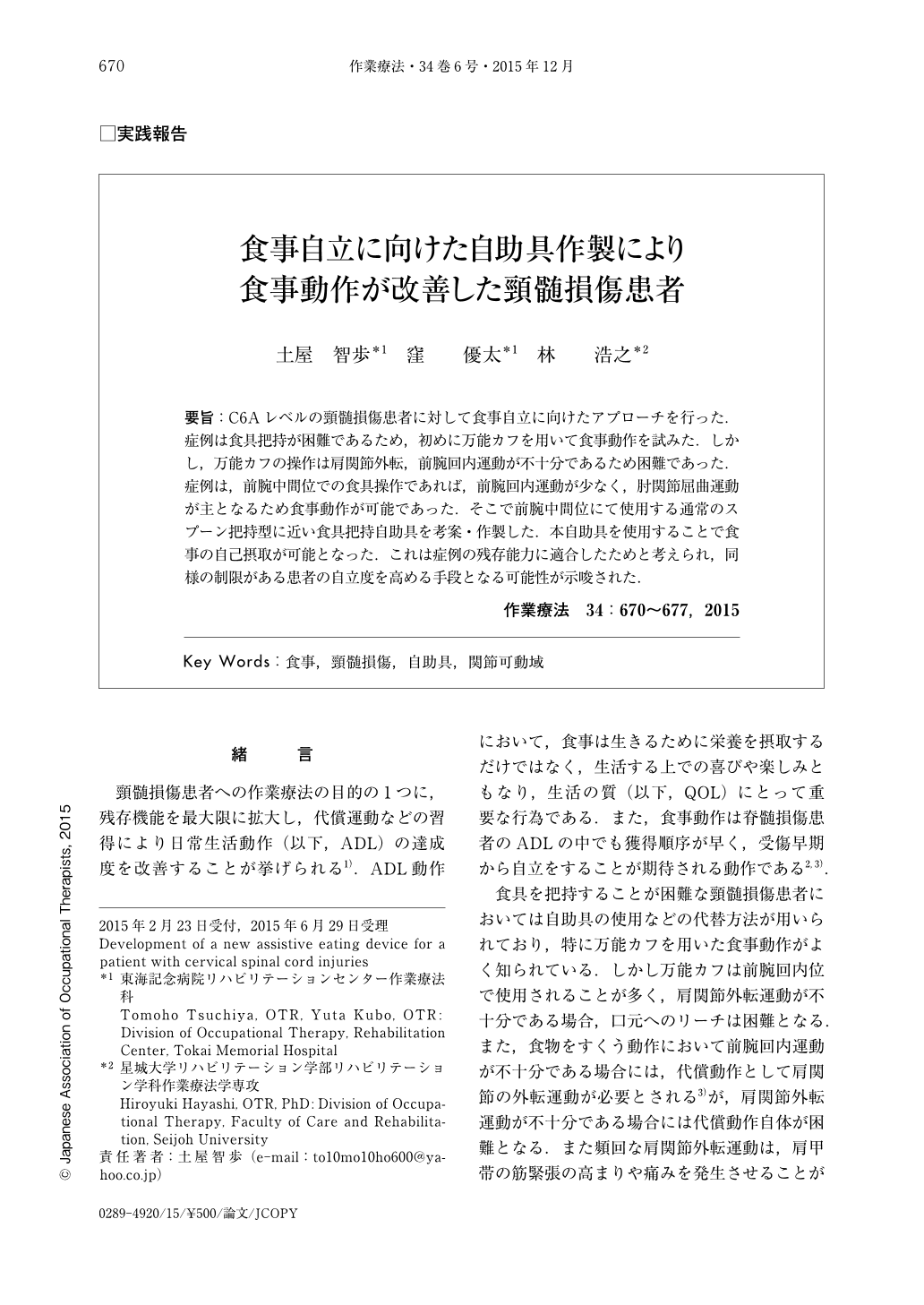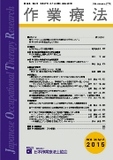Japanese
English
- 販売していません
- Abstract 文献概要
- 1ページ目 Look Inside
- 参考文献 Reference
- サイト内被引用 Cited by
要旨:C6Aレベルの頸髄損傷患者に対して食事自立に向けたアプローチを行った.症例は食具把持が困難であるため,初めに万能カフを用いて食事動作を試みた.しかし,万能カフの操作は肩関節外転,前腕回内運動が不十分であるため困難であった.症例は,前腕中間位での食具操作であれば,前腕回内運動が少なく,肘関節屈曲運動が主となるため食事動作が可能であった.そこで前腕中間位にて使用する通常のスプーン把持型に近い食具把持自助具を考案・作製した.本自助具を使用することで食事の自己摂取が可能となった.これは症例の残存能力に適合したためと考えられ,同様の制限がある患者の自立度を高める手段となる可能性が示唆された.
We developed a new assistive eating device to support self-feeding by an elderly patient with a level C6A cervical spinal cord injury. Given that his fingers were too weak to grip anything, the use of a universal cuff to aid his self-feeding was attempted. He could not manipulate cutlery successfully using the universal cuff with his forearm in a pronated position, as he had insufficient control to either pronate his forearm or abduct his shoulder. However, he could eat when he used cutlery with his forearm in the neutral position. This was because the position enabled him to eat using mainly elbow flexion rather than forearm pronation and shoulder abduction. Therefore, we developed a new assistive eating device that enabled holding cutlery in the neutral forearm position. The grip used was similar to that of the normal grip when using a spoon. This allowed him to finally self-feed successfully using the new assistive eating device because the device could be adjusted to the patient's ability and residual function. We believe that this assistive eating device can enable self-feeding in other patients with similar limitations.

Copyright © 2015, Japanese Association of Occupational Therapists. All rights reserved.


